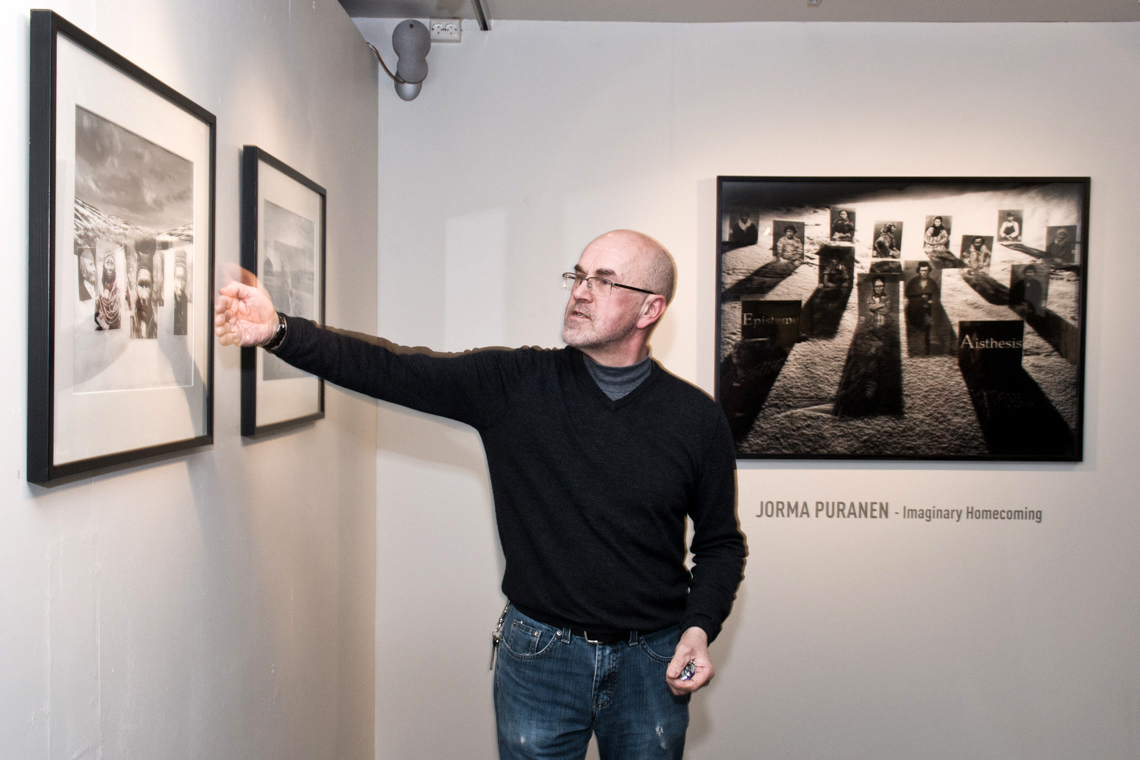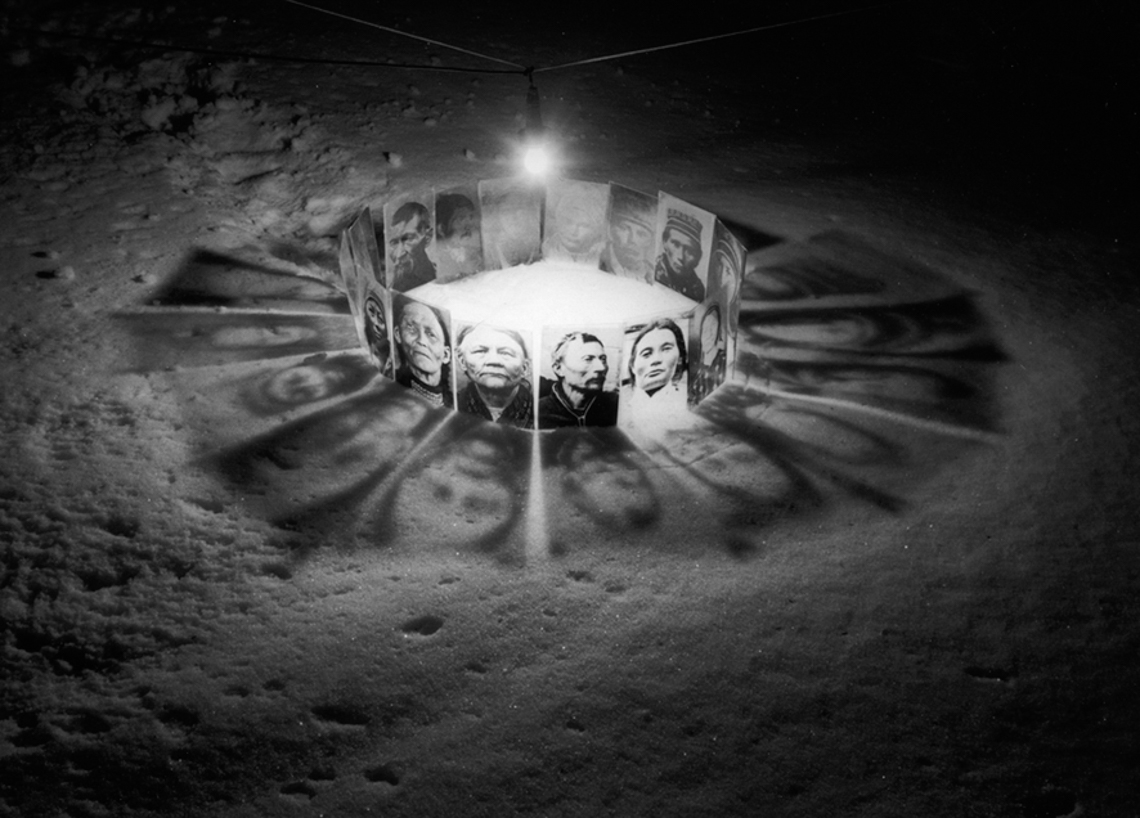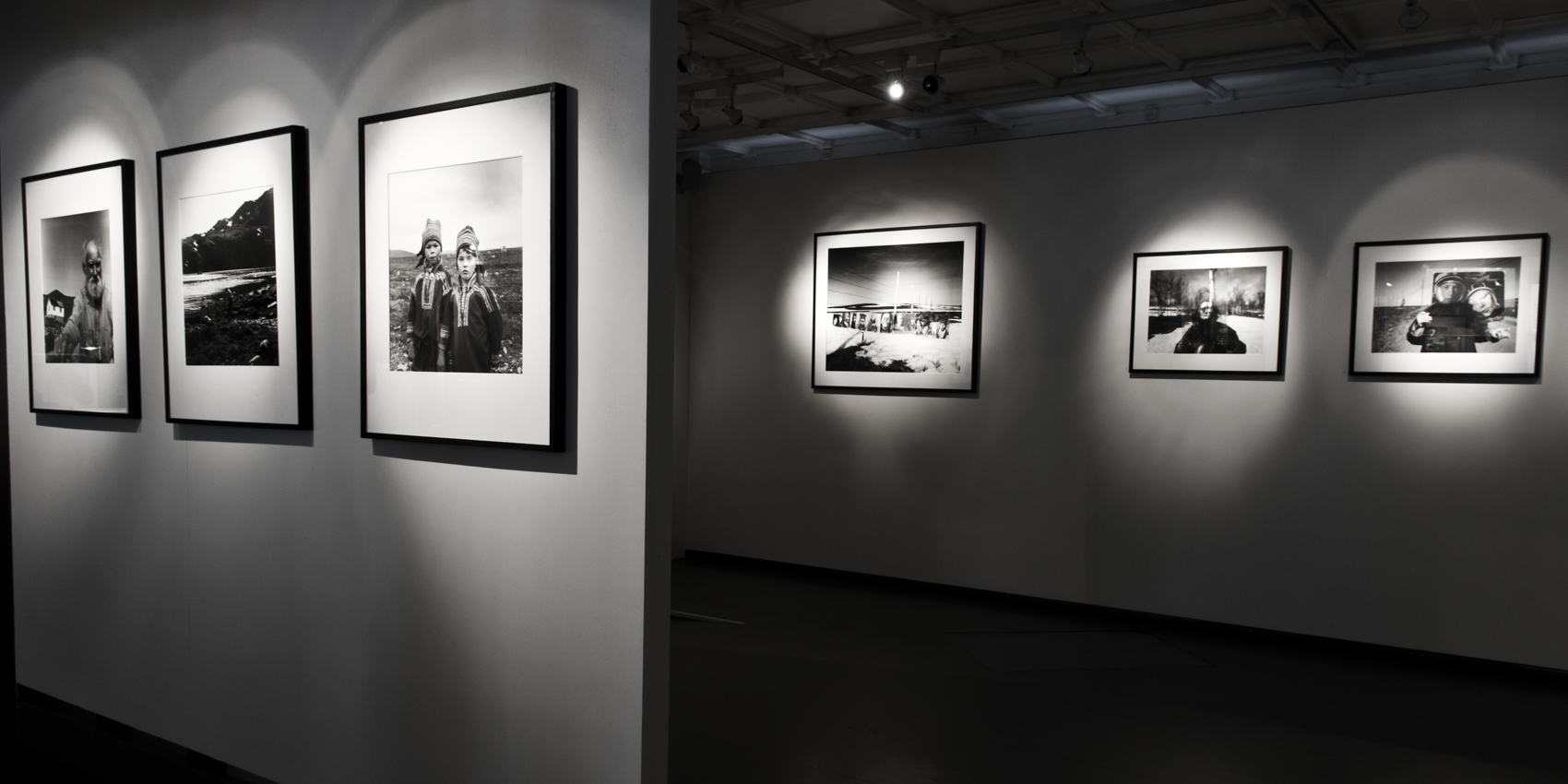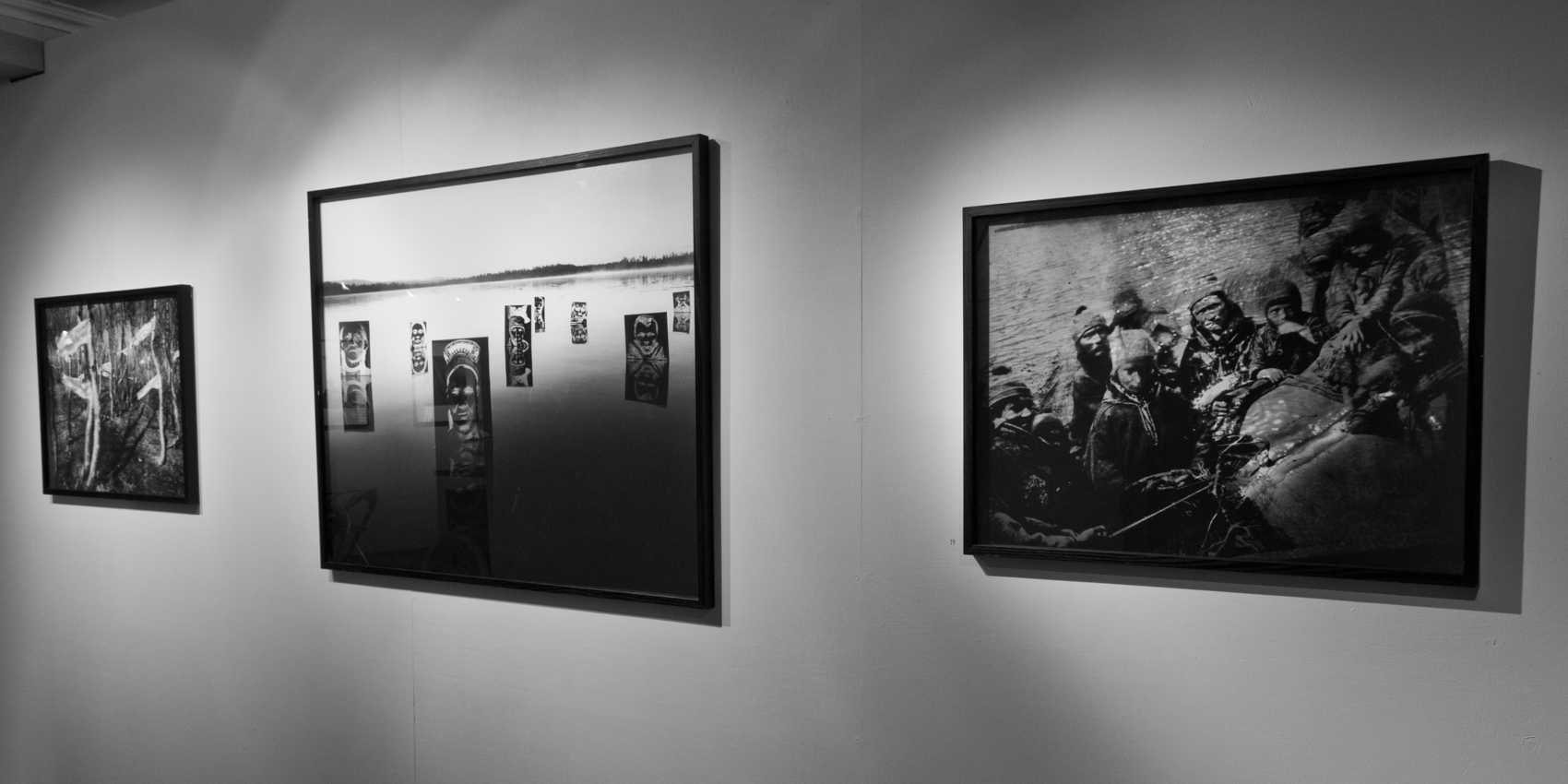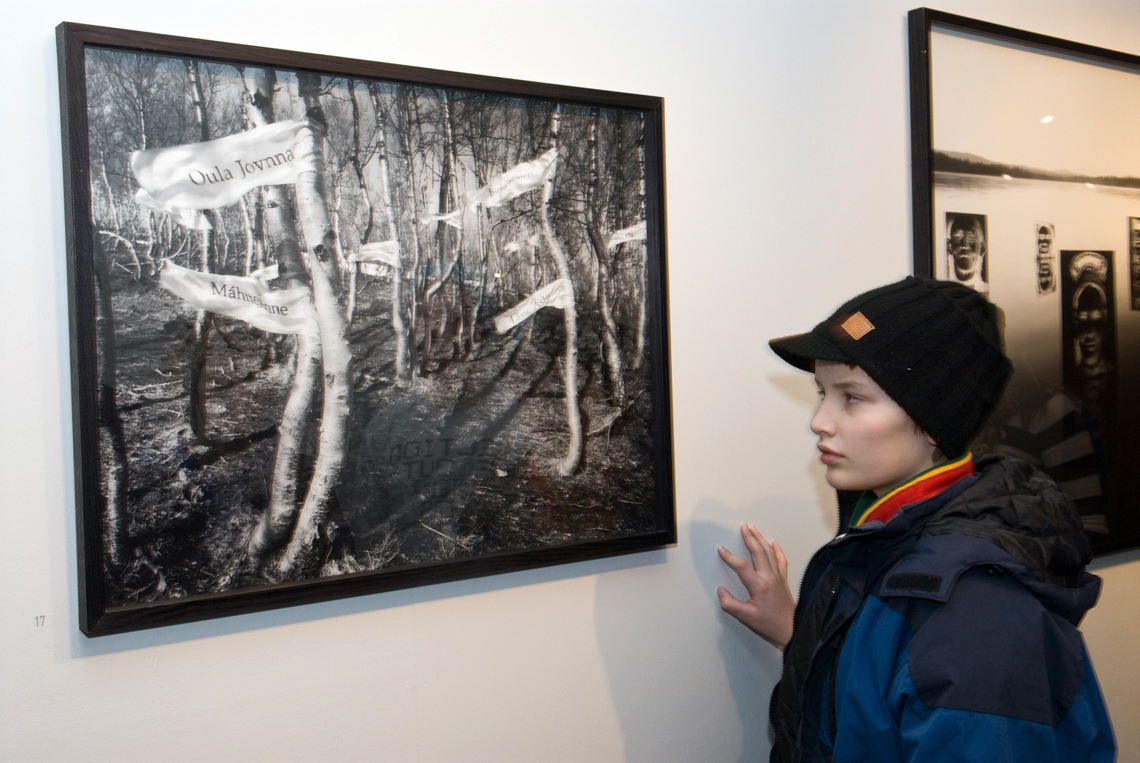Faithful to tradition we celebrate Sámi Week in Tromsø with an exhibition where the Sámi are reflected in one form or another and mode of expression. This year we are delighted to be able to invite the general public to an encounter with two photographers who in their respective ways are unique in the Nordic artistic and photographic landscape.
The exhibition deals with identity, moods, everyday life, people, nature, closeness and distance. Most of the photographs feature strong images of life in a remote landscape and of encounters between traditions and ways of life, past and present, time and space, silence and noise.
A landscape is speechless. Day by day, its only idiom is the sensory experience afforded by the biological reality, the weather conditions, and the actions that take place in the environment.
Jorma Puranen, Foreword, Imaginary Homecoming (Oulu, Finland: Pohjoinen, 1999).
However, we can also assume that a landscape has another dimension: the potential but invisible field of possibilities nourished by everyday perceptions, lived experiences, different histories, narratives and fantasies.
In fact, any understanding of landscape entails a succession of distinct moments and different points of view. The layeredness of landscape, in other words, forms part of our own projection. Every landscape is also a mental landscape.
During a visit to the Finnish Sámi region, Puranen was shown a series of unusually beautiful portrait photographs in monochrome originally used in a book project by Nils-Aslak Valkepää. He was informed that they were from a photograph library at the Musée de L’Homme in Paris. Puranen visited the library and found a number of photographs, mainly portrait studies, taken in 1884 during Prince Roland Bonaparte’s expedition to the Sámi regions in the north. The images were taken by a French photographer by the name of G. Roche. Puranen photographed a selection of the portraits and mounted them on acrylic plates. He took them back to the landscape in which they were originally taken and arranged them as installations he photographed. The installations may be perceived as an attempt to relocate cultural elements from the past back to the present, and a transgression of time and space. The project was also presented in book form.
The art works and photographs in the exhibition are on loan direct from the photographer, and the museum is currently trying to persuade Puranen to visit Tromsø in person.

